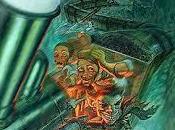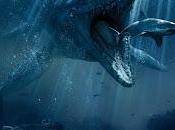Continuiamo il nostro viaggio dietro le quinte di Arrow, con una intervista esclusiva al fight coordinator/stunt coordinator della serie targata The CW James Bamford. Specializzato in arti marziali, Bamford ha lavorato a numerose produzioni cinematografiche e televisive tra cui sono da ricordare X-Men 2, X-Men: Conflitto Finale, Stragate SG-1, Sanctuary e True Justice.
Salve, James, e benvenuto. Puoi innanzitutto parlarci di te e della tua carriera?
Mi chiamo James Bamford. Lavoro da vent’anni come stuntman, stunt coordinator e fight coordinator per l’industria cinematografica e per la televisione. Al momento ricopro il ruolo di fight coordinator per la serie TV Arrow della Warner Bros, e lavoro assieme allo stunt coordinator, JJ Makaro.
Puoi dirci come sei arrivato a lavorare nella serie Arrow?
Ho lavorato a lungo con JJ Makaro, lo stunt coordinator dell’episodio pilota. JJ mi ha contattato nel gennaio 2012 mentre stavo girando un film a Cuba, precisamente a La Havana, chiedendomi informazioni sulle varie capacità e sui diversi allenamenti che un attore deve sviluppare per prepararsi a girare scene d’azione. Una volta tornato a Vancouver, mi ha chiesto di lavorare con lui all’episodio pilota di Arrow, non solo come stunt coordinator ma anche nel ruolo del cattivo di turno e dato che le riprese di Arrow non si sovrapponevano a quelle del film Halo, ho detto di si. Finito di girare il pilot, mi hanno chiesto di lavorare anche al resto della serie.
Puoi descriverci nel dettaglio una tua giornata sul set di Arrow?
E’ impossibile descrivere la mia giornata tipo sul set. Per me non esiste una giornata tipo.

Quali sono le tecniche di lotta che sono state utilizzate nella serie? Ce le puoi descrivere? Ho notato che Arrow usa delle mosse abbastanza particolari. C’è una voluta ricerca di realismo in questo?
Intendi tecniche o stile di combattimento? La mia coreografia include diversi stili di combattimento. Nella serie, il protagonista si è allenato con più maestri quindi non si limita a usare un solo stile e riesce sempre ad adattarsi alle varie sfide che gli si presentano nei diversi episodi.
Quanto allenamento e lavoro ci vuole per riuscire a coreografare una scena di lotta?
Prima di tutto, gli stunt devono avere alle spalle anni di esperienza altrimenti non li assumo. Secondo, gli attori devono aver praticato atletica e conoscere le basi delle arti marziali. È indispensabile che sappiano almeno come dare un pugno. Le prove possono comunque durare dalle 4 alle 20 ore, a seconda della lunghezza e dell’importanza della scena d’azione per l’economica della serie.
Il tuo lavoro si limita soltanto agli stunt o anche agli attori del cast? In questo caso, ci puoi parlare di come hai lavorato con i protagonisti?
Vedi sopra. Lavoro a stretto contatto con Stephen Amell per sviluppare le sue capacità di combattimento e studiare la coreografia.
Come avete lavorato per le scene in cui Arrow deve fare uso del proprio arco, molte volte utilizzato in maniera molto ravvicinata?
Dovevo saper maneggiare l’arma prevista dal copione per il mio personaggio, in questo caso un arco, e quindi ho dovuto, per forza di cose, adattarne velocemente l’uso ad un tipo di combattimento più ravvicinato rispetto a quello per cui viene solitamente utilizzato.

Come fight coreographer e fight coordinator sei responsabile di tanti aspetti differenti di un film o di una serie. Quale di questi ruoli è per te più impegnativo e creativo?
Si tratta dello stesso lavoro, ma con un nome diverso e sono entrambi lavori creativi. Lavorare per una serie televisiva è più difficile che girare un lungometraggio perché si ha meno tempo a disposizione per prepararsi. Inoltre, una serie TV deve costantemente cambiare e sviluppare materiale sempre nuovo e interessante mentre il film deve seguire un unico copione. Una serie TV deve vedersela con 22 o 23 copioni differenti.
Hai lavorato in produzioni sia cinematografiche che televisive. Ci sono delle differenze sostanziali nel lavorare in una serie tv e in un film. Se sì, ce le puoi descrivere?
Il tempo a disposizione e il compenso.

Alla serie ha partecipato Kelly Hu nel ruolo di Chyna. Immagino che lei fosse già abituata a questo tipo di sequenze. Immagino ti abbia facilitato il lavoro. Ci puoi parlare di lei?
Kelly è un’artista meravigliosa e una lottatrice di arti marziali di talento. Quando lavoro con lei, tutto va liscio come l’olio.
Quali sono i tuoi prossimi progetti? Tra poco inizieranno le riprese della seconda stagione di Arrow…
Al momento stiamo già lavorando ad un progetto segreto che coinvolge alcuni membri della squadra creativa di Arrow e porterò a termine un piccolo lavoro da regista entro giugno. Poi, mi dedicherò di nuovo ad Arrow. Se sono fortunato riuscirò a ritagliarmi una settimana per una breve vacanza… da qualche parte.
ENGLISH VERSION
Hi James and welcome. First of all, can you tell us something about you and your work?
My name is James Bamford. I’ve been a stuntman/stunt coordinator/fight choreographer for over 20 years now within the film and television industry. I am currently the fight coordinator on WB’s ARROW alongside the stunt coordinator, JJ Makaro.
How did you start to work for the series Arrow?
I had a long professional relationship with the Pilot’s stunt coordinator, JJ Makaro. While I was shooting a film in Havana, Cuba in January 2012, JJ sent me several messages asking me about different fighting skills and training for an actor. When I returned back to Vancouver, he just decided to ask me to come and work on the Pilot episode of Arrow….not only as the fight coordinator…..but as a bad guy actor as well. The Pilot shooting schedule fit right in to my future plans on the Halo movie schedule…..so I said “yes”….and after the pilot was finished being shot, I was asked to be a part of the series as well.

What is a typical day like for you on set?
There is no such thing as a “typical” day on set. It simply does not exist.
Which fighting techniques have been used for this series? Can you tell us about them? I also noticed that very peculiar fight moves are used. Is it because you want fight scenes to be as real as possible?
Do you mean techniques, or style? I incorporate several styles into the choreography… in the story, the main character has studied under several different masters, so he is not limited to one style and is always adapting to new challenges which emerge throughout the season.
How much training and work are needed to create a fight sequence?
First of all….the stunt people need to arrive with years of experience, or I won’t hire them. Secondly, the actors require a working knowledge of athletics and basic martial arts. They need to know how to at the very least throw a punch. Rehearsals run anywhere from 4 hours to 20 hours… depending on the size and importance of the fight sequence within the storyline of the series.
Did your work involve the stunts only or did you work with the actors, too? If so, can you tell us about your work with the protagonists of the series?
See above answer. I work very closely with Stephen Amell in the development of his fighting abilities, and choreography knowledge.
How did you design the scenes with the bow, often used from a very short distance?
I had to work with the weapon provided to me by the script of the show… in this case, it’s a bow. I quickly adapted the use of the bow incorporated into a closer range fighting style than it is usually meant for out of necessity.
As fight coordinator and fight choreographer you must deal with many different aspects of a movie or a series. In your view, which of these two jobs is the most creative and difficult?
They are the same job… just different titles… and they are both creative. It’s much more difficult working on a TV series than a feature film as there is not the relaxed large amount of time as you encounter on a feature film to prepare. In addition, a TV series has to constantly change develop new and interesting material… a feature is only the one script. A TV series has 22 or 23 scripts to contend with.
You worked both for cinema and television. What are the main differences between these two worlds, if any?
Time and money.

Kelly Hu took part in the series, in the role of Chyna. I guess she’s already familiar with these kind of scenes. I bet this made your job easier. Can you tell us about her?
Kelly is a wonderful person and a talented martial artist… she makes my job flow like water.
What upcoming projects do you have planned? Arrow season 2 will start soon…
We are already working on a secret project involving some of the Arrow creative team… and I have a small directing deal to complete before the end of June… then it’s back to Arrow. Hopefully I will have 6 days to have a short holiday in there… somewhere.
Etichette associate:
In EvidenzaArrowJames BamfordStephen AmellCondividi:
Seguici su:






